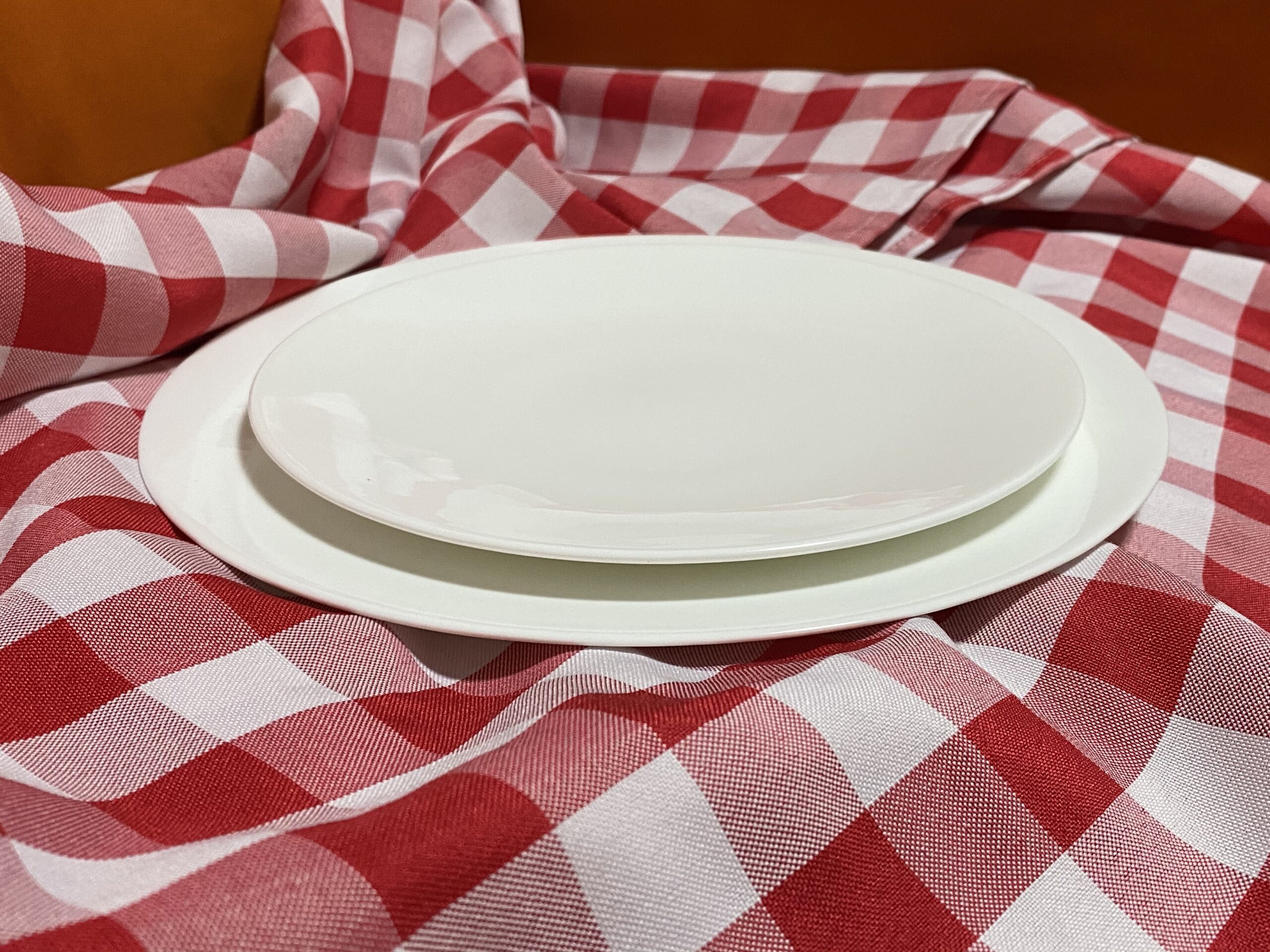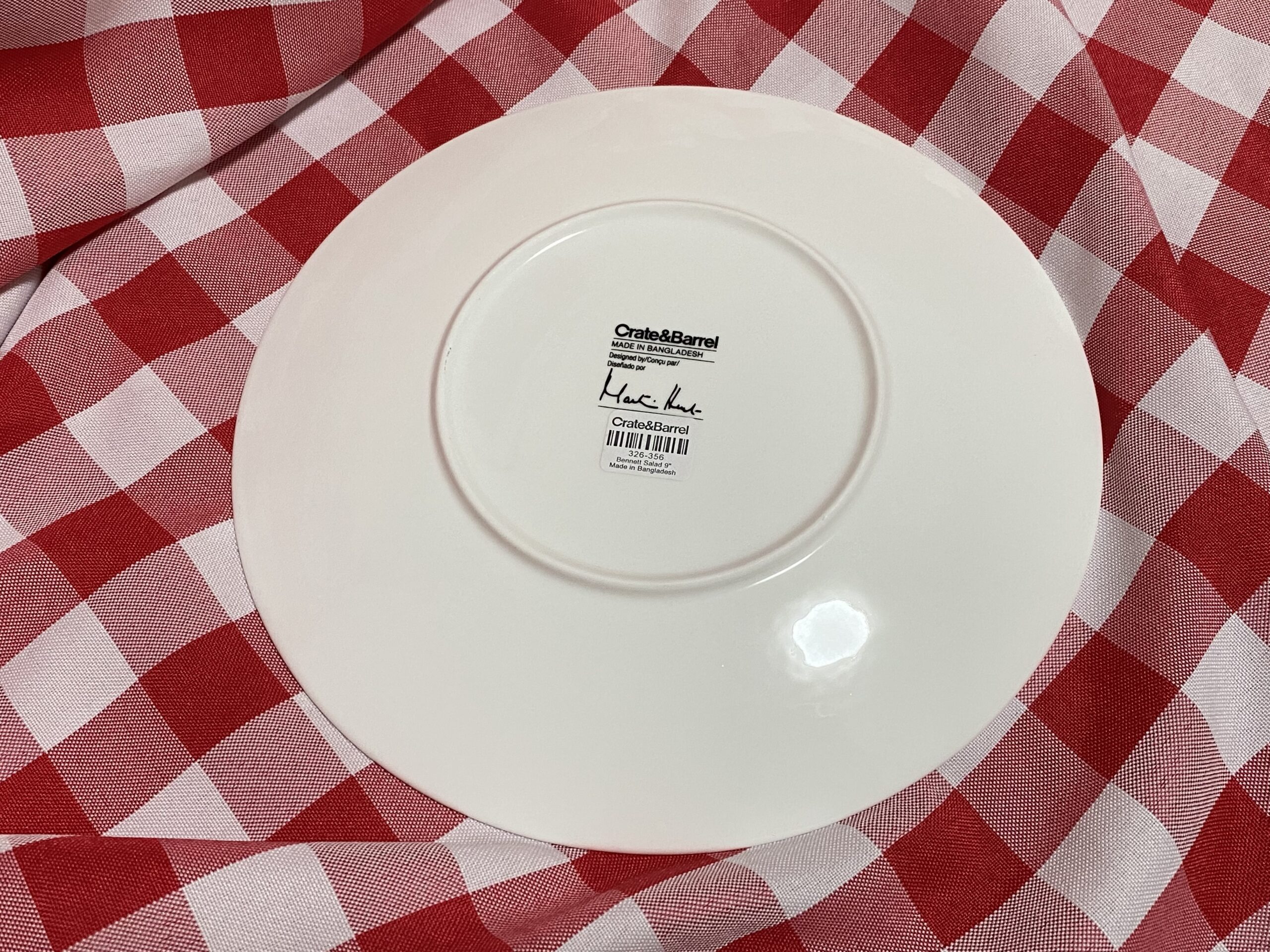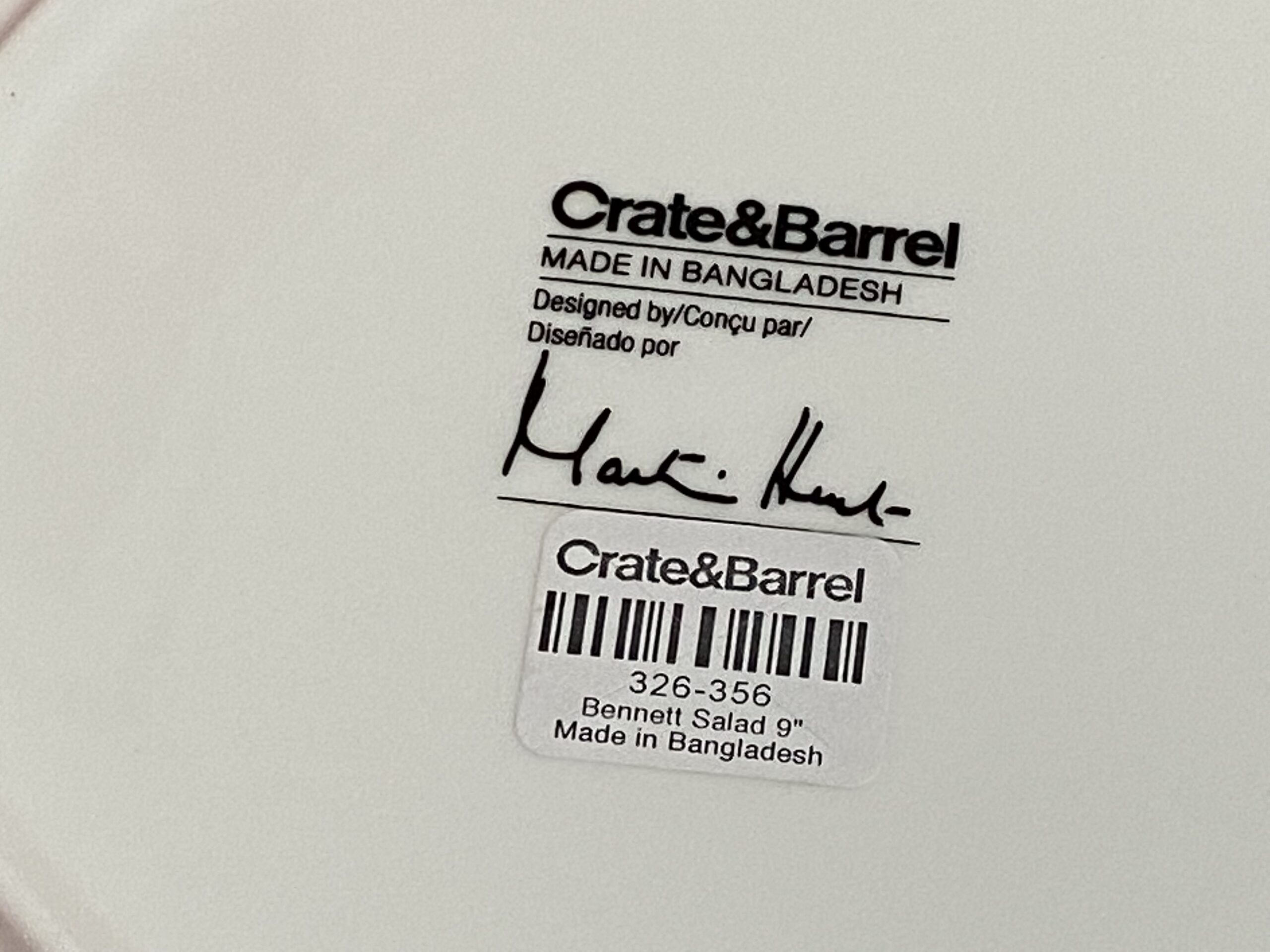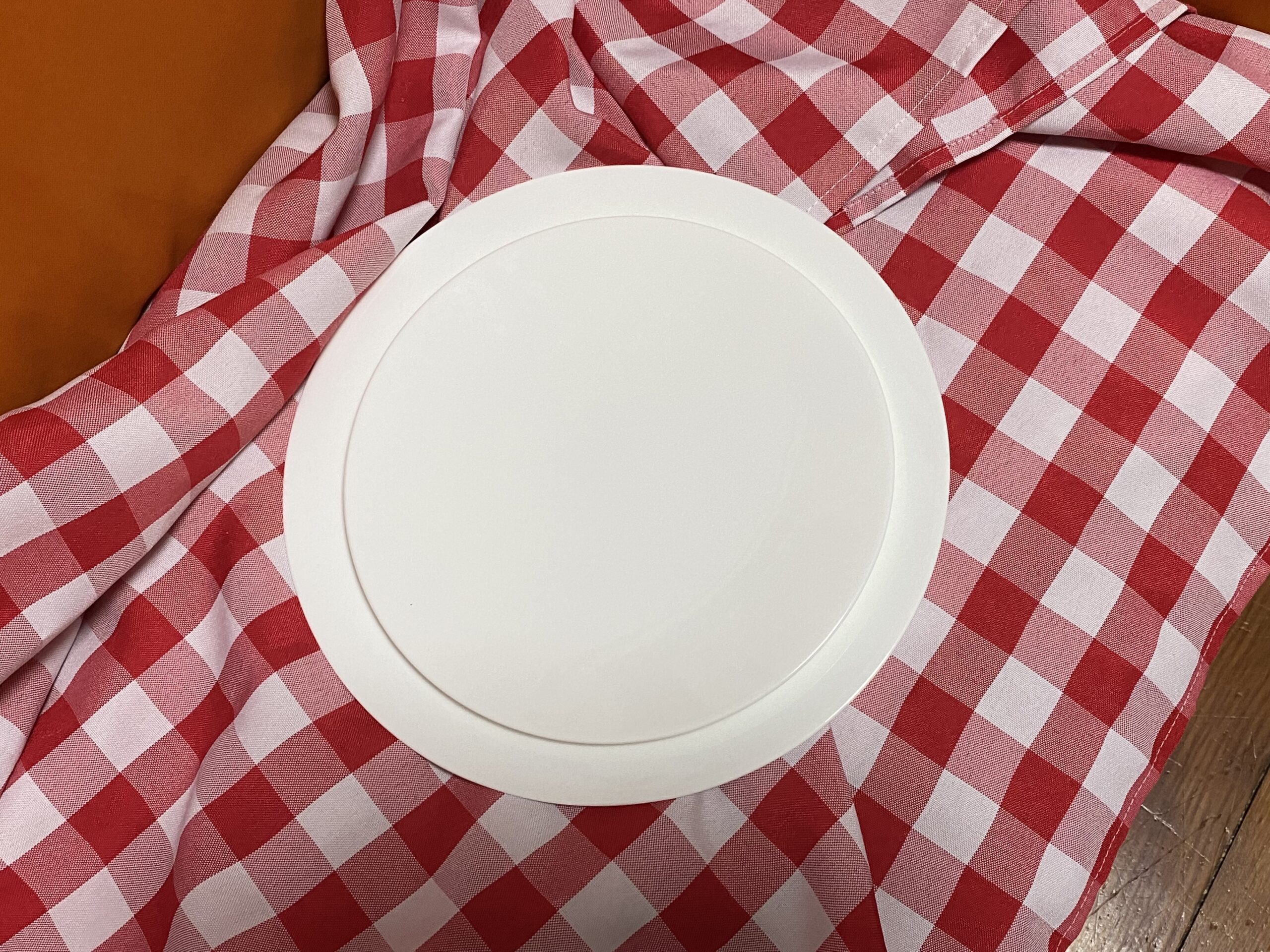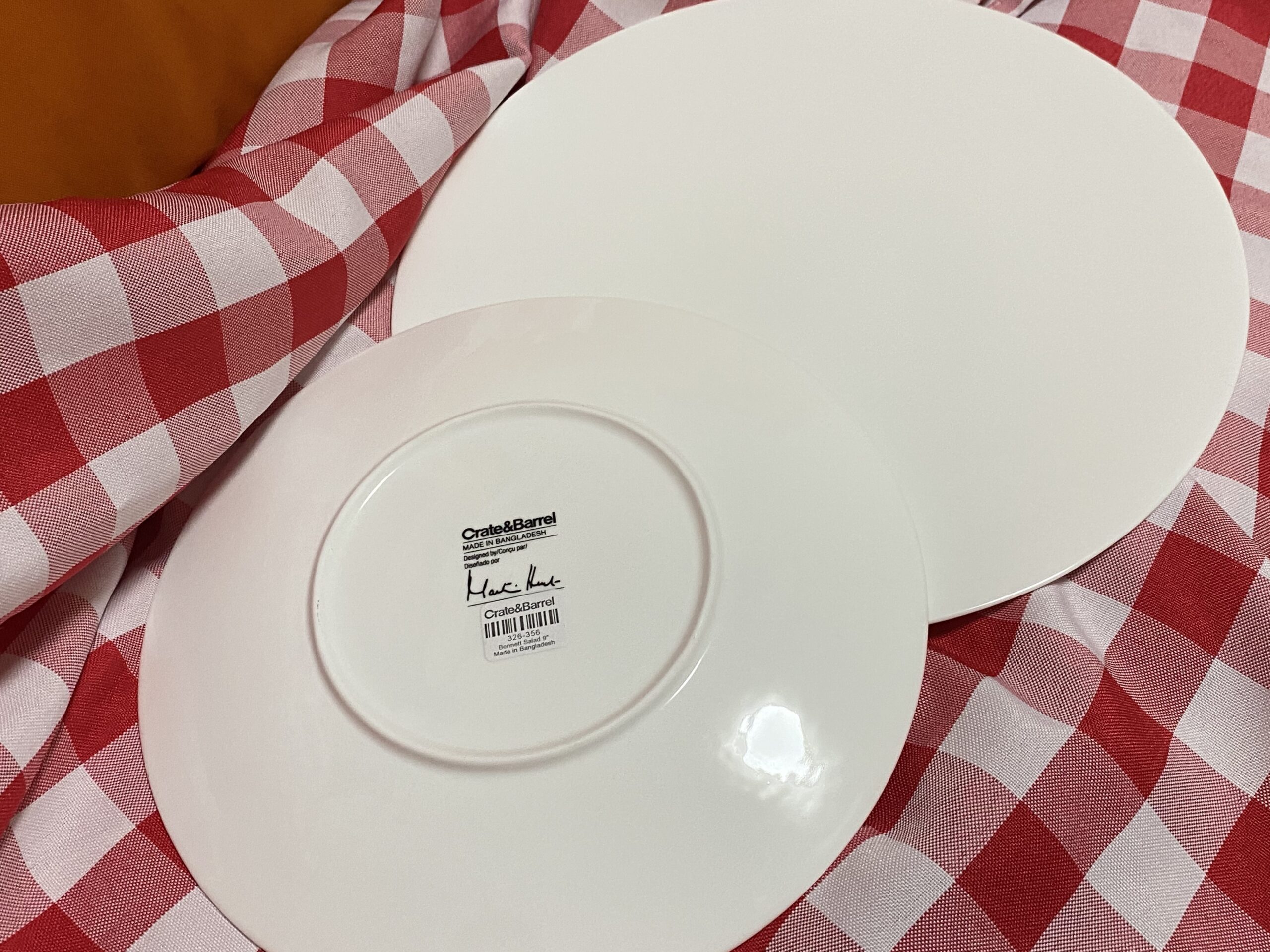Crate & Barrel (Made in Bangladesh) Marc Bennett 9-inch salad plate: 8,322 ppm Lead on the back mark / logo area of the dish.
Introduction:
Tamara Rubin is an independent advocate for consumer goods safety, and she is also a mother of Lead-poisoned children. She began testing consumer goods for toxicants in 2009, and was the parent-advocate responsible for finding Lead in the popular fidget spinner toys in 2017. She uses XRF testing (a scientific method used by the Consumer Product Safety Commission) to test consumer goods for metallic toxicants (including Lead, Cadmium, Mercury and Arsenic). To read more about the testing methodology employed for the test results reported on this blog, please click this link.
Reading #1.) food surface of the dish
90-second test [All tests on all components are repeated multiple times to confirm the accuracy of the range of test results.]
- Lead (Pb): 128 +/- 6 ppm
- Iron (Fe): 918 +/- 44 ppm
- Copper (Cu): 72 +/- 10 ppm
- Zinc (Zn): 17,800 +/- 200 ppm
- Zirconium (Zr): 1,953 +/- 20 ppm
- Tin (Sn): 28 +/- 3 ppm
- Barium (Ba): 56 +/- 12 ppm
Reading #2.) black logo area on the back of the dish
60-second test
- Lead (Pb): 8,322 +/- 86 ppm
- Cadmium (Cd): 4 +/- 2 ppm
- Chromium (Cr): 5,286 +/- 180 ppm
- Manganese (Mn): 4,136 +/- 126 ppm
- Iron (Fe): 2,605 +/- 78 ppm
- Cobalt (Co): 5,803 +/- 96 ppm
- Copper (Cu): 227 +/- 16 ppm
- Zinc (Zn): 12,400 +/- 100 ppm
- Zirconium (Zr): 1,535 +/- 19 ppm
- Tin (Sn): 38 +/- 4 ppm
- Barium (Ba): 71 +/- 15 ppm
- Platinum (Pt): 57 +/- 30 ppm
Some additional reading that might be of interest:
- The post discussing the testing methodology used on this website
- Post discussing how to send in an item for testing
- Things that you can test at home.
- Things that might be better tested with an XRF instrument.
- “Can I test things myself at home?”
Thanks for reading. Thank you for sharing my posts. As always, please let me know if you have any questions and I will do my best to answer them personally as soon as I have a moment (which may not be right away – but I will try!)
Tamara Rubin
#LeadSafeMama
Amazon links are affiliate links. If you purchase something after clicking on one of my links I may receive a percentage of what you spend – at no extra cost to you.


Never Miss an Important Article Again!
Join our Email List


